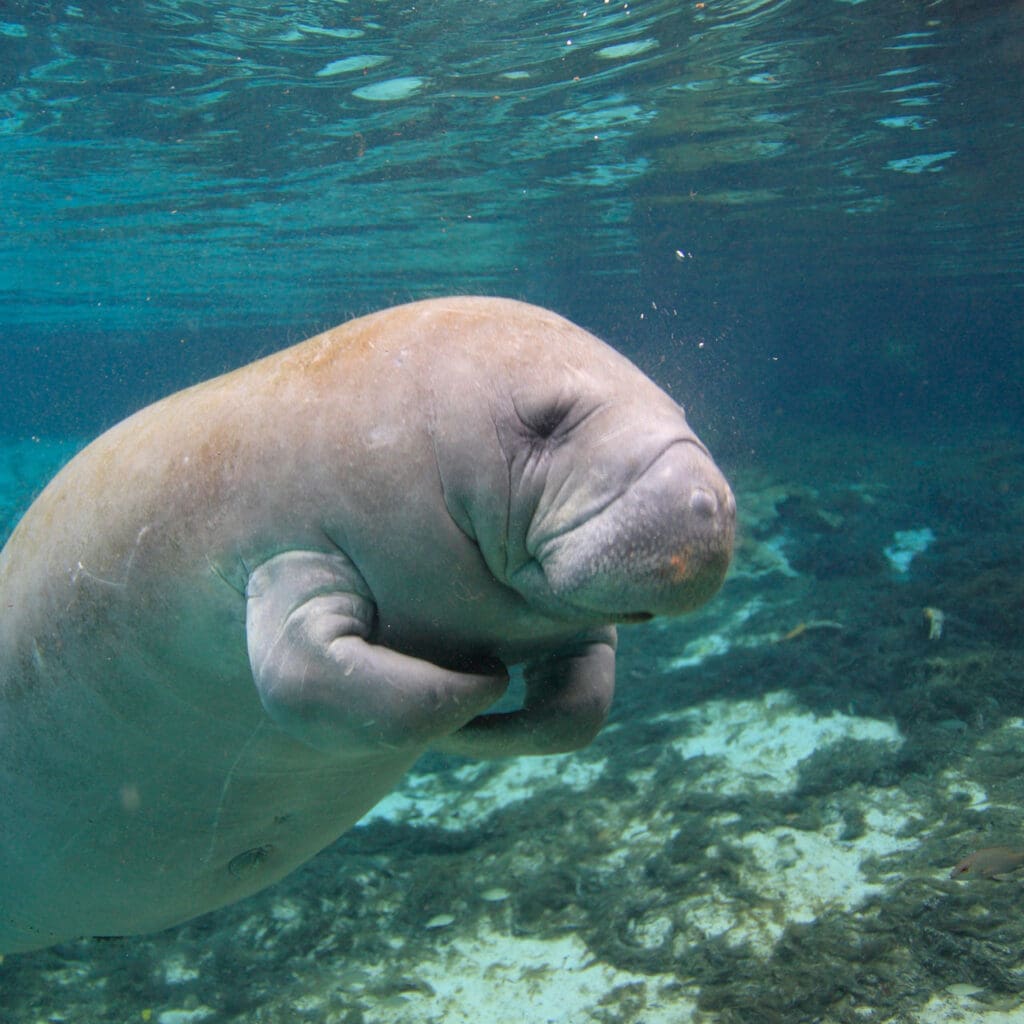Friday Fish Facts is straying off the beaten path again to tackle the question are mermaids really manatees?
Fort Lauderdale, known for its intricate canal system and beautiful beaches, is also home to one of nature’s most gentle and fascinating creatures: the manatee (Trichechus manatus latirostris). Locals consider themselves lucky to encounter one by accident, and many have secret spots they only tell their closest friends about where these giants congregate. Plus, they are often said to the be the source of the mermaid “legends.” Since we’re co-hosting Mermaids and Mangroves on August 2, it seemed okay to include these puppies in #fff.
The Connection to Mermaids
The legend of mermaids has captivated human imagination for centuries, and manatees have a surprising connection to these mythical creatures. When Christopher Columbus set sail in 1492, he recorded sightings of mermaids, which were actually manatees.
On January 9, 1493, while sailing near the coast of Hispaniola (modern-day Haiti and the Dominican Republic), Columbus recorded seeing three mermaids. He described the mermaids as “not so beautiful as they are said to be, for their faces had some masculine traits.” This description aligns with the physical characteristics of manatees, which have whiskered snouts and somewhat humanoid shapes when partially submerged
It might seem odd to confuse a manatee with a mermaid, but from a distance, the manatee’s human-like eyes, large body, and graceful movements in the water could easily be mistaken for a mermaid by sailors who had spent long periods at sea. The manatee’s slow, gentle nature and its tendency to rise to the surface to breathe may have contributed to these mistaken identities.
Interesting Facts about Manatees
Manatees are primarily herbivores, with a diet that consists mainly of a variety of aquatic plants. In the waters around Fort Lauderdale, manatees feed on over 60 species of plants, including seagrasses like turtle grass, manatee grass, and shoal grass, as well as freshwater vegetation such as hydrilla and water hyacinth
They use their prehensile lips to grasp and manipulate vegetation, which they then grind with their molars. An adult manatee can consume about 4% to 9% of its body weight in wet vegetation daily, which translates to approximately 32 to 108 pounds of food
Manatees feed at various levels in the water column. They graze on the bottom, in the water column, and at the surface. They have even been observed cropping overhanging branches and consuming acorns that fall into the water.
Manatees have a unique and somewhat communal approach to mating. They do not form permanent pair bonds and are not monogamous. Instead, their mating behavior is polygamous, with both males and females engaging with multiple partners.
When a female manatee, known as a cow, is in estrus, she attracts the attention of numerous males, called bulls. This leads to the formation of a mating herd, which can consist of a dozen or more bulls vying for the cow’s attention.
The mating herd is a dynamic and energetic event. The bulls compete to stay close to the cow, often pushing and shoving each other in the process. Despite the apparent chaos, manatees are generally not aggressive creatures. The cow can mate with multiple bulls during her estrous cycle, which lasts about three weeks.
After mating, the bulls leave, and the cow is solely responsible for raising the calf. The maternal bond between the cow and her calf is strong, with the calf staying with its mother for up to two years to learn essential survival skills
Manatees in Fort Lauderdale
Fort Lauderdale’s warm waters and abundant vegetation make it an ideal habitat for manatees, especially during the winter months when they seek warmer waters. The city’s extensive canal system provides a safe haven for them, away from the colder ocean waters. However, manatees in Fort Lauderdale face several threats, including boat strikes, habitat loss, and water pollution
Local conservation efforts are crucial to protecting manatees. Organizations and agencies work tirelessly to restore habitats, enforce boat speed limits in manatee zones, and educate the public about the importance of these creatures. Supplemental feeding programs, such as providing romaine lettuce, have been implemented to help manatees during times of food scarcity
Manatees are an integral part of Fort Lauderdale’s natural heritage. Their feeding and mating habits, along with their connection to the legend of mermaids, make them fascinating subjects of study and admiration. As we continue to learn more about these gentle giants, it is essential to protect their habitats and ensure their survival for future generations. By understanding and appreciating manatees, we can help preserve the magic and wonder they bring to our waterways.

